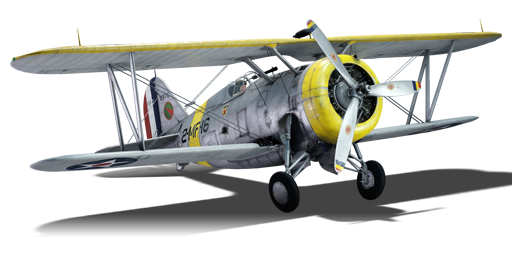



Bob Galer was a naval aviator in the USMC. While flying in his F3F-2 for a landing on the USS Saratoga, a mishap occurred and his F3F-2 was ditched into the ocean. Galer would later become a double ace during the battle of Guadalcanal and would survive the war. He also served in Korea until he retired in the late 1950s. Galer was shot down four times and managed to survive every time. Galer’s F3F-2, still resting at the bottom of the Pacific, was discovered by an American submersible in 1988 and recovered three years later. His plane is currently on display at the National Naval Aviation Museum.
Introduced as a premium fighter in Update 1.69 "Regia Aeronautica", Galer's F3F-2 is a special version of the F3F-2. It mainly differs in the livery and higher reward modifiers compared to the regular F3F-2. Fitted with the 950 hp version of the Wright R-1820 Cyclone, the F3F is a relatively quick bi-plane and can reach an astounding ~506 mph (810 km/h) before overspeeding. Its armament consists of one 12.7 mm and one 7.62 mm machine gun mounted in the nose. Although lacklustre, the F3F-2’s performance more than makes up for it.
flaps
flaps
flaps
brake
| Belt | Belt filling | Armor penetration (mm) at a distance: | |||||
|---|---|---|---|---|---|---|---|
| 10 m | 100 m | 500 m | 1000 m | 1500 m | 2000 m | ||
| T/Ball/I/AP | 30 | 27 | 20 | 13 | 9 | 6 | |
| AP/AP/AP/T/I | 30 | 27 | 20 | 13 | 9 | 6 | |
| T/AP/AP/AP | 30 | 27 | 20 | 13 | 9 | 6 | |
| T/T/T/AP | 30 | 27 | 20 | 13 | 9 | 6 | |
| AP/I/AP | 30 | 27 | 20 | 13 | 9 | 6 | |
| Belt | Belt filling | Armor penetration (mm) at a distance: | |||||
|---|---|---|---|---|---|---|---|
| 10 m | 100 m | 500 m | 1000 m | 1500 m | 2000 m | ||
| T/Ball/Ball/Ball/AP/I | 13 | 12 | 7 | 3 | 2 | 0 | |
| T/AP/I | 13 | 12 | 7 | 3 | 2 | 0 | |
| AP/T/T/T/T | 13 | 12 | 7 | 3 | 2 | 0 | |
| AP/AP/AP/I/I | 13 | 12 | 7 | 3 | 2 | 0 | |







 2 x (15 / 25 / 110) %
2 x (15 / 25 / 110) % 
 2 x 75 %
2 x 75 % 


Flight performance | |
|---|---|
Survivability |
|---|
Weaponry | ||
|---|---|---|